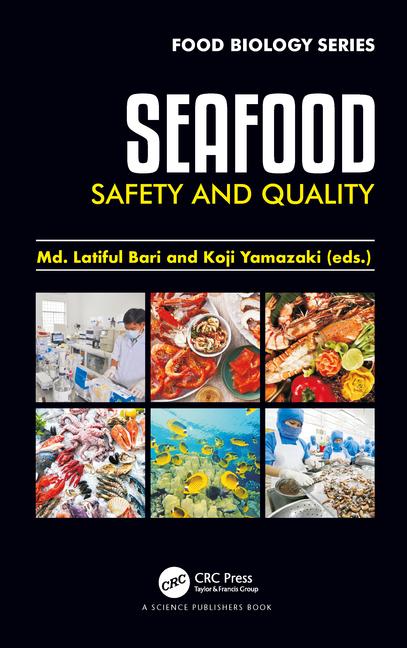In light of numerous food recalls and a surge in headlines about toxic ingredients in food, it is no wonder that consumer confidence in the safety of the food supply is waning. In fact, the 2024 IFIC Food & Health Survey reveals that consumer confidence has reached an all-time low — the lowest it has been in a decade.
Given this stark decline, the latest International Food Information Council Spotlight Survey: American Consumer Perceptions of Food Ingredient Safety further examines how consumers make safety assessments when it comes to purchasing and consuming foods and beverages, specifically regarding ingredients.
“Trust is at the heart of food choices for individuals and their families,” said IFIC President and CEO Wendy Reinhardt Kapsak. “By exploring how consumers assess food and ingredient safety, we can pinpoint where trust may be faltering and identify opportunities to rebuild it.”
Top safety concerns include foodborne illness, heavy metals
The latest IFIC Spotlight Survey seeks to identify the most pressing food safety concerns for Americans. Survey takers selected microbial concerns, such as the presence of E. coli, and the presence of heavy metals in food as primary issues of concern. Specifically, nearly one in three Americans (32%) are “extremely concerned” about E. coli in ground beef. Additionally, 29% of Americans are extremely concerned about lead, cadmium and arsenic in baby food, while 27% voice extreme concern about mercury in seafood.
Less than one in five surveyed are extremely concerned about allergens in packaged foods (16%) and allergens in foods served at restaurants (15%).
Ultraprocessed foods, dyes, sugar substitutes ranked as most avoided foods, ingredients
The latest Spotlight Survey uncovers a variety of factors that Americans consider when assessing the safety of food products, including foods and ingredients they avoid, as well as their views on the quantity and/or presence of certain ingredients, and their opinions on the total number of ingredients listed.
When provided a list of 11 ingredients, consumers indicated that dyes/colors are the most avoided, with 35% opting to actively steer clear of them. This was followed closely by sugar substitutes (34%), MSG (29%), bioengineered/GMO ingredients (27%), nanoplastics (26%) and preservatives (25%). Caffeine, flavors, allergens and gluten were less frequently avoided.
When provided a list of 13 types of foods and beverages, consumers ranked ultraprocessed foods as the foods they avoid the most, at 41%. Plant-based meat alternatives take the second slot (37%), followed by processed meats (29%) and plant-based dairy alternatives (27%). Only 10% avoid dairy, and 8% avoid meat and/or poultry.
Nearly three in 10 consumers surveyed reported they do not avoid any of the 11 listed ingredients (29%), while 25% said they do not avoid any of the 13 listed foods.
“Interestingly, it’s not always a ‘glass half empty’ mentality. We find that Americans consider the health benefits of what they eat and drink (30%) more often than the health risks (8%),” IFIC Senior Director, Food Ingredient Communications, Tony Flood, said.
Ingredient presence versus amount
When evaluating the potential health risks of packaged foods and beverages, one-third of consumers (31%) considered the mere presence of an ingredient to be the most significant factor. Notably, this concern regarding the presence of an ingredient surpasses considerations related to the quantity of an ingredient (21%) or the total number of ingredients listed (16%).
“While we weren’t surprised that certain ingredients or foods carry a less desirable reputation, we were surprised that 1 in 4 Americans simply do not think about either the health risks or the health benefits of what they eat or drink,” Flood said.
Examining consumer behaviors, building trust
“It’s evident that consumers hold strong opinions about the foods and ingredients they consider safe, as well as those they choose to avoid or seek out,” said Reinhardt Kapsak. “While science plays a crucial role in ensuring food safety, the data suggest that consumers prefer factual, practical, and actionable information that enables them to make more informed food choices.”
The survey also explores which sources of information consumers trust most regarding food ingredient safety. Among those who actively avoid certain ingredients, registered dietitians are the most trusted source, with 73% expressing confidence in their advice. They are followed by primary health care providers (62%), food and nutrition scientists/experts (69%) and health-focused websites (51%). In contrast, fewer than half of respondents expressed trust in family and friends (47%), government agencies (45%) and social media posts (20%).
Reinhardt Kapsak said, “Safety and trust go hand in hand. The survey shows that Americans are increasingly relying on credentialed professionals to guide their choices about which ingredients to eat and avoid. This presents a valuable opportunity. At the International Food Information Council, we are dedicated to equipping registered dietitians and other healthcare providers with the latest scientific information on ingredient safety, and providing them with the practical, actionable tips consumers crave.”
Research methodology
The International Food Information Council commissioned an online survey among U.S. consumers to measure knowledge, attitudes and beliefs about the safety of food ingredients. Data was collected June 6-10, 2024, via an online survey of 1,000 Americans aged 18 to over 80 years old, and responses were weighted to ensure proportional results. The Bayesian confidence level for the survey sample (n=1000) is 3.5, which is roughly equivalent to a margin of error of ±3.1 at the 95% confidence level.








